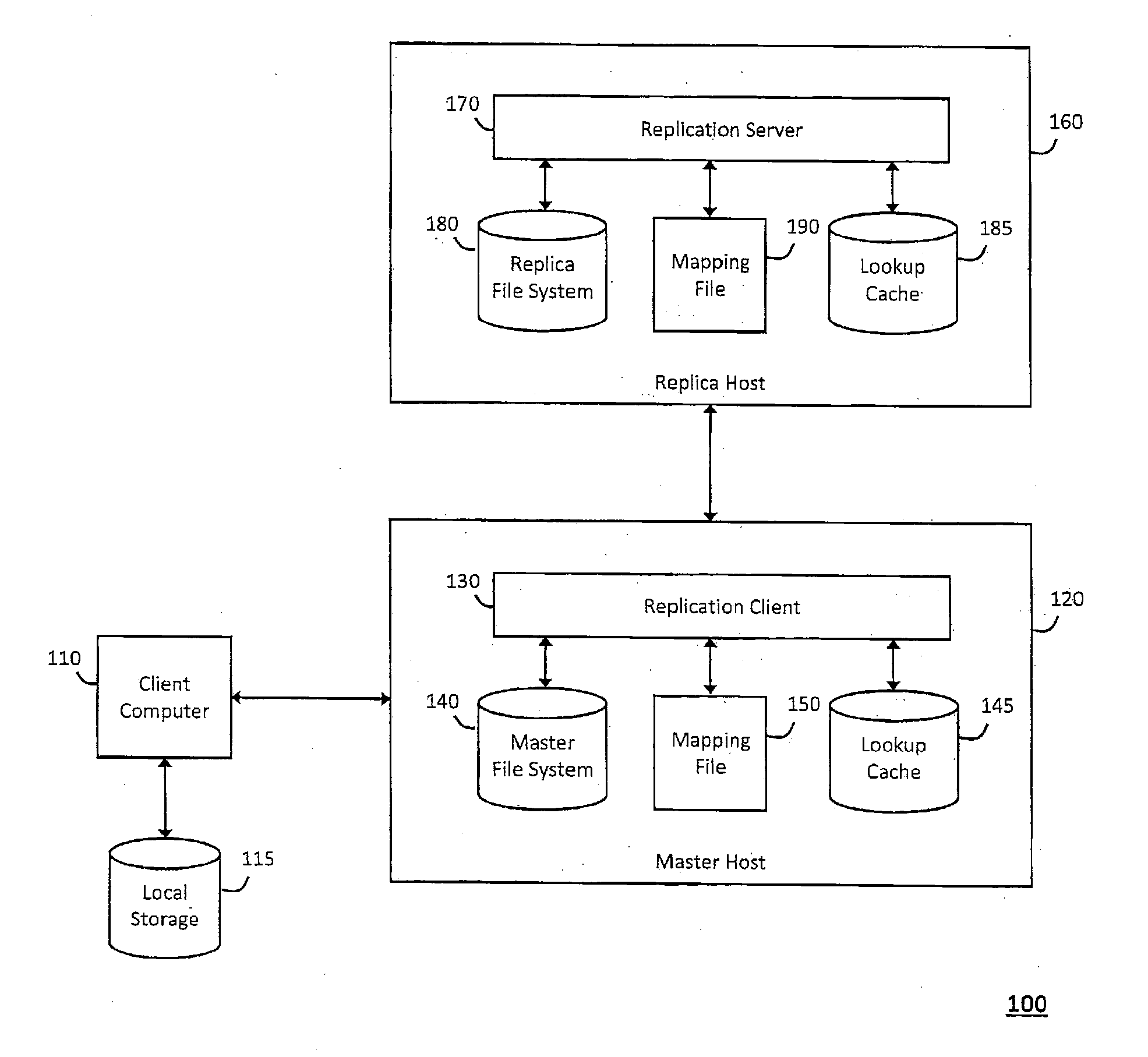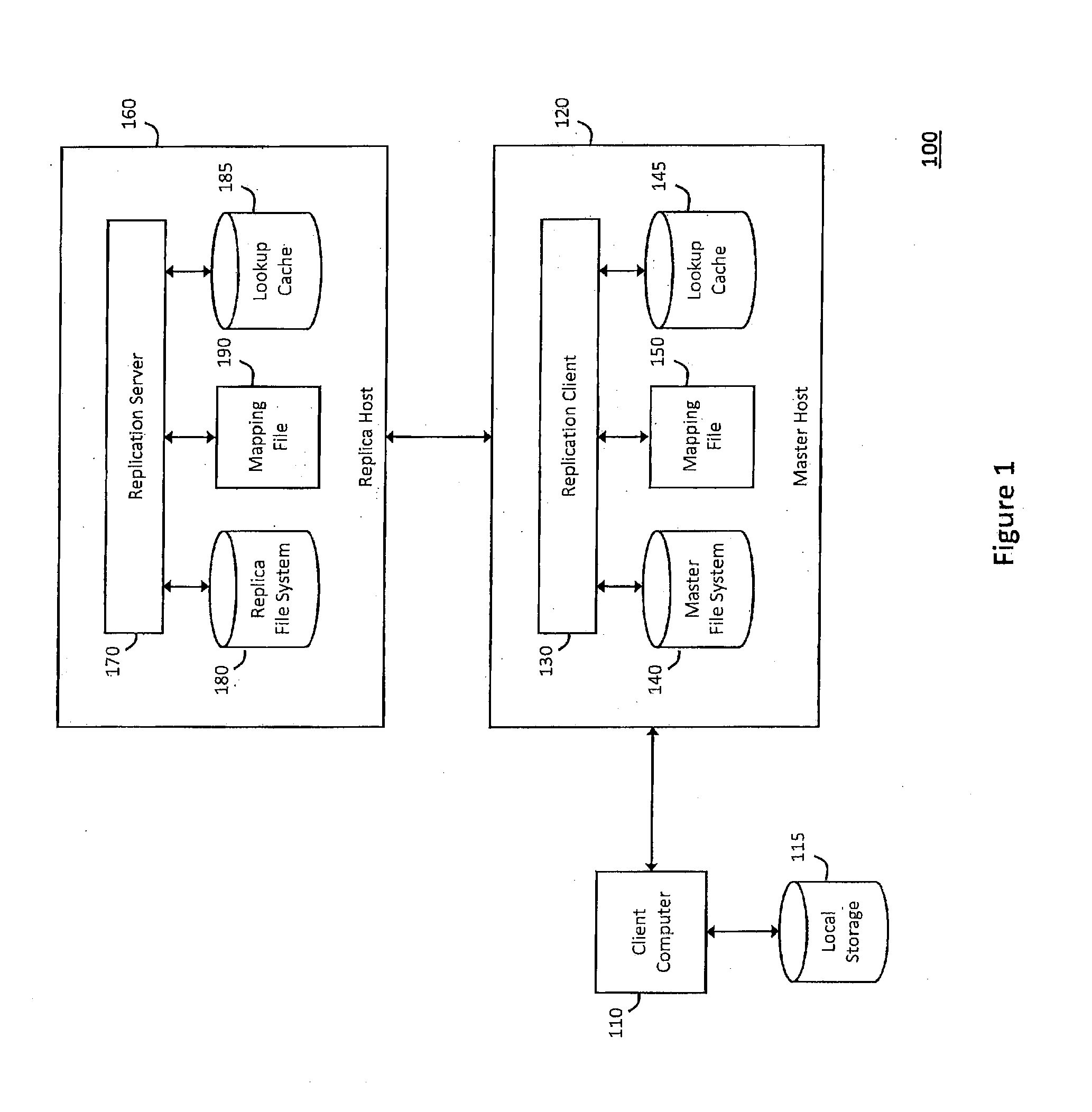System and method for network file system server replication using reverse path lookup
a network file system and reverse path lookup technology, applied in error detection/correction, instruments, computing, etc., can solve the problems of information technology threats, data corruption, application failures, viruses, etc., to increase the number, type and severity of natural disasters, and organizations to lose substantial amounts of revenue or information. , to achieve the effect of simplifying the replication
- Summary
- Abstract
- Description
- Claims
- Application Information
AI Technical Summary
Benefits of technology
Problems solved by technology
Method used
Image
Examples
Embodiment Construction
[0019]According to one aspect of the invention, FIG. 1 illustrates an exemplary system 100 for network file system server replication using reverse path lookup. In particular, the system 100 illustrated in FIG. 1 may include a master host 120 that uses reverse path lookups to build mappings between file handles that represent file objects in a master file system 140 and full path names associated with the file objects in the master file system 140. Further, the master host 120 may use the mappings to distinguish hard links that relate to different file objects that have the same identifier in the master file system 140 despite having different parents or different file names. As such, the master host 120 may then store the mappings between the file handles and the full path names may in a lookup cache 145, and may further store any information that can distinguish the hard links in the lookup cache 145 to enable replicating changes to the master file system 120. For example, a clien...
PUM
 Login to View More
Login to View More Abstract
Description
Claims
Application Information
 Login to View More
Login to View More - R&D
- Intellectual Property
- Life Sciences
- Materials
- Tech Scout
- Unparalleled Data Quality
- Higher Quality Content
- 60% Fewer Hallucinations
Browse by: Latest US Patents, China's latest patents, Technical Efficacy Thesaurus, Application Domain, Technology Topic, Popular Technical Reports.
© 2025 PatSnap. All rights reserved.Legal|Privacy policy|Modern Slavery Act Transparency Statement|Sitemap|About US| Contact US: help@patsnap.com



